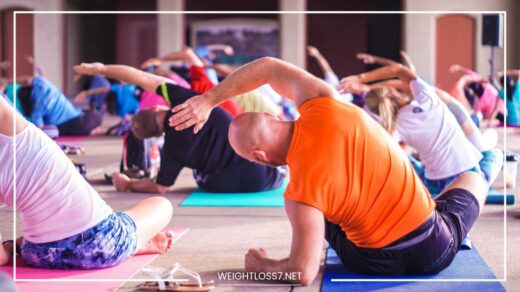How to Get Fit

How to Get Fit
How to Get Fit: A Beginner’s Guide to a Healthier, Happier You
Getting fit isn’t just about looking good in a swimsuit (although that can be a perk!). It’s about investing in your overall health and well-being.
A well-rounded fitness routine can boost your energy levels, improve your mood, strengthen your muscles and bones, and even sharpen your mind.
But for beginners, the world of fitness can seem overwhelming. Where do you even start?
This comprehensive guide is here to help! We’ll break down the key steps to getting fit, from setting realistic goals to crafting a workout plan you’ll actually enjoy.
We’ll also delve deeper into different exercise types, provide tips for overcoming common challenges, and explore ways to make fitness a sustainable part of your life.
Step 1: Find Your Why
Motivation is the fuel that keeps your fitness journey going. Before diving headfirst into workout routines, take a moment to reflect on your “why.” What are your hopes for getting fit?
Here are some questions to get you started:
- Physical Health: Do you want to boost your energy levels? Improve your sleep? Manage a chronic condition?
- Mental Wellbeing: Are you looking to reduce stress and anxiety? Improve your mood and self-esteem?
- Performance Goals: Are you training for a specific event like a race or competition?
- Overall Well-being: Do you simply want to feel stronger and more confident in your own skin?
Having a clear purpose will help you stay focused and motivated when the inevitable challenges arise.
Step 2: Set SMART Goals
Now that you know your “why,” it’s time to translate that into actionable goals. SMART goals are Specific, Measurable, Achievable, Relevant, and Time-bound.
For example, instead of a vague goal like “get in shape,” aim for something like:
- “Walk for 30 minutes, 3 times a week for the next month.” (Cardio)
- “Perform 3 sets of 10 bodyweight squats, lunges, and push-ups twice a week by the end of the quarter.” (Strength Training)
- “Join a beginner’s yoga class once a week to improve flexibility.” (Flexibility)
This goal is clear (you know what you’re working towards), measurable (you can track your walking time and reps), achievable (you can gradually build up to 30 minutes and complete these exercises), relevant to your overall goal of getting fit, and time-bound (you have a specific timeframe to work with).
Step 3: Listen to Your Body – It’s Talking to You!
It’s important to be honest with yourself about your current fitness level. If you haven’t been active for a while, don’t jump straight into intense workouts.
This is a recipe for injury and discouragement. Instead, start slowly and gradually increase the intensity and duration of your workouts as you get stronger.
Listen to these body signals:
- Shortness of breath: If you’re gasping for air during exercise, slow down or take a break.
- Muscle fatigue: It’s normal to feel tired during a workout, but if you’re experiencing extreme fatigue that persists for days, you might be pushing yourself too hard.
- Pain: Pain is a red flag. If you experience any sharp or persistent pain, stop the activity and consult a doctor or physical therapist.
Here are some tips for gradually increasing your fitness level:
- The F.I.T.T. Principle: This principle stands for Frequency, Intensity, Time, and Type of exercise. When starting out, focus on increasing one variable at a time. For example, if you’re currently walking for 15 minutes twice a week, you could aim to walk for 15 minutes three times a week (increasing frequency) or walk for 20 minutes twice a week (increasing time).
- The 10% rule: As you get stronger, you can gradually increase the intensity or duration of your workouts by about 10% each week. This helps prevent plateaus and keeps your body challenged without risking overtraining.
Step 4: Building a Balanced Routine – A Symphony of Exercise
A well-rounded fitness routine incorporates different types of exercise to target various aspects of your health:
- Cardio: Cardio, or aerobic exercise, gets your heart rate up and improves your cardiovascular health. Examples include brisk walking, running, swimming, biking, dancing, and jumping rope. Aim for at least 150 minutes of moderate-intensity cardio or 75 minutes of vigorous-intensity cardio per week. Here’s a breakdown of different cardio intensities:
-
Moderate-intensity cardio: You can comfortably carry on a conversation while exercising. You’ll break a sweat, but you won’t be gasping for air. Examples include brisk walking, jogging, cycling at a moderate pace, swimming, and dancing (think ballroom dancing, not clubbing!).
-
Vigorous-intensity cardio: You’ll be breathing hard and may not be able to hold a conversation. This type of exercise elevates your heart rate significantly. Examples include running, sprinting, swimming laps, high-intensity interval training (HIIT), and intense dance workouts.
-
Strength Training: Strength training builds muscle mass and bone density, which can help improve your metabolism, posture, balance, and functional strength for everyday activities. You don’t need fancy weights to get started; bodyweight exercises like squats, lunges, push-ups, planks, rows, and dips are a great way to build strength. Aim for strength training exercises that work all major muscle groups at least twice a week. As you get stronger, you can incorporate weights, resistance bands, or exercise machines for added challenge.
-
Flexibility: Flexibility exercises help improve your range of motion and prevent injuries. Stretching after your workouts and incorporating activities like yoga, Pilates, or Tai Chi into your routine are great ways to stay flexible. Aim for at least 10-15 minutes of stretching most days of the week.
Step 5: Find Activities You Enjoy – Making Fitness Fun!
Exercise shouldn’t feel like punishment! The key to sticking with a fitness routine is to find activities you genuinely enjoy. Here are some tips:
- Variety is the spice of life! Don’t get stuck in a rut. Try different types of exercise to keep things interesting. Explore group fitness classes, outdoor activities like hiking or kayaking, or team sports.
- Find a workout buddy. Exercising with a friend or family member can make workouts more fun and provide accountability.
- Turn up the tunes! Create a workout playlist with music that motivates you and gets you moving.
- Reward yourself for your achievements. Celebrate your progress with a healthy treat, a new workout outfit, or a relaxing massage.
Step 6: Make it a Lifestyle – Fitness Beyond the Gym
Think of fitness as a lifelong journey, not a quick fix. Small, sustainable changes to your daily routine can make a big difference in the long run. Here are some tips to integrate fitness into your everyday life:
- Become an NEAT freak! NEAT stands for Non-exercise Activity Thermogenesis. This refers to the calories you burn through everyday activities besides formal exercise. Take the stairs instead of the elevator, park farther away from your destination and walk, do some bodyweight exercises during commercial breaks while watching TV, or incorporate walking meetings with colleagues.
- Make your commute count. If you live close enough to work, consider biking, walking, or scooting.
- Get active with your family. Plan active outings like family hikes, bike rides, or weekend sports games.
- Turn chores into workouts. Put on some music and dance while cleaning the house, do some squats while gardening, or do lunges while carrying groceries.
Step 7: Celebrate Your Successes – Big and Small!
Getting fit is a process, and it’s important to celebrate your achievements along the way. Did you hit a new personal best on your run?
Did you finally master that challenging yoga pose? Acknowledge your progress and reward yourself for your hard work. This will help you stay motivated and keep moving forward. Here are some ways to celebrate your wins:
- Track your progress: Keep a workout journal or use a fitness app to monitor your progress. Seeing your improvement can be a great motivator.
- Treat yourself: Did you reach a fitness goal? Reward yourself with a healthy meal at your favorite restaurant, a new workout outfit, or a massage.
- Share your journey: Tell your friends and family about your fitness goals and successes. Their support can make a big difference.
Step 8: Conquering Common Challenges – You’ve Got This!
Even the most dedicated fitness enthusiasts face challenges. Here’s how to overcome some of the most common roadblocks:
- Lack of Time: Even the busiest schedules can accommodate some form of exercise. Aim for shorter, more intense workouts like HIIT or bodyweight exercises at home.
- Lack of Motivation: Having a bad day? Don’t skip your workout altogether. Maybe do a shorter, easier session or try a different activity. Remember, some movement is better than none.
- Boredom: Feeling stuck in a rut? Refer back to step 5! Mix things up with new activities, find a workout buddy, or explore the great outdoors.
- Soreness and Pain: Muscle soreness after a workout is normal. However, if you experience sharp or persistent pain, stop the activity and consult a doctor or physical therapist. Listen to your body and take rest days when needed.
- Setbacks Happen: Don’t get discouraged by setbacks like missing a workout or indulging in a cheat meal. Everyone experiences these. Just get back on track and remember your long-term goals.
Step 9: Building a Support System – You’re Not Alone!
Having a support system can make a world of difference on your fitness journey. Here are some ways to build yours:
- Find a workout buddy: Exercising with a friend or family member can provide motivation, accountability, and make workouts more enjoyable.
- Join a fitness class: Group fitness classes offer a supportive environment, expert instruction, and a chance to meet people with similar goals.
- Hire a personal trainer: A personal trainer can create a customized workout plan, provide guidance and motivation, and help you stay accountable.
- Talk to your doctor: Your doctor can be a valuable resource for guidance and support on your fitness journey. They can help you set realistic goals and ensure your exercise routine is safe and effective, especially if you have any pre-existing health conditions.
Step 10: Making Fitness a Sustainable Habit
Getting fit is a marathon, not a sprint. The key to long-term success is making fitness a sustainable habit. Here are some tips:
- Focus on progress, not perfection. Don’t get discouraged by setbacks. Celebrate your progress, no matter how small.
- Find activities you enjoy. Fitness shouldn’t feel like a chore. Find activities you genuinely look forward to.
- Make it convenient. Schedule your workouts in your calendar and set reminders. Pack your gym bag the night before. Having a plan will help you stick to your routine.
- Listen to your body. Take rest days when you need them. Pushing yourself too hard can lead to injury and burnout.
- Be patient. It takes time to see results. Don’t get discouraged if you don’t see a six-pack in a week. Stay consistent and celebrate your progress along the way.
Final Word: Your Fitness Journey Awaits!
Taking charge of your health and fitness is one of the best decisions you can make. By following these steps, setting realistic goals, and finding activities you enjoy, you can create a sustainable fitness routine that will help you feel stronger, healthier, and happier.
Remember, you are capable of achieving amazing things! So lace up your shoes, hit the ground running (or walking, or swimming!), and embark on your journey to a healthier, happier you.

















